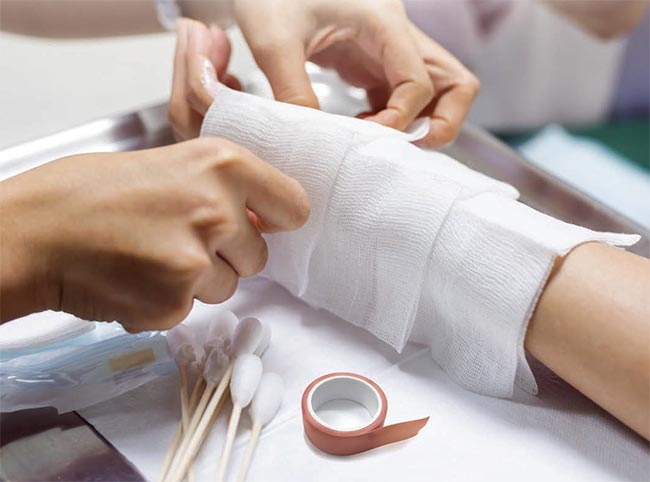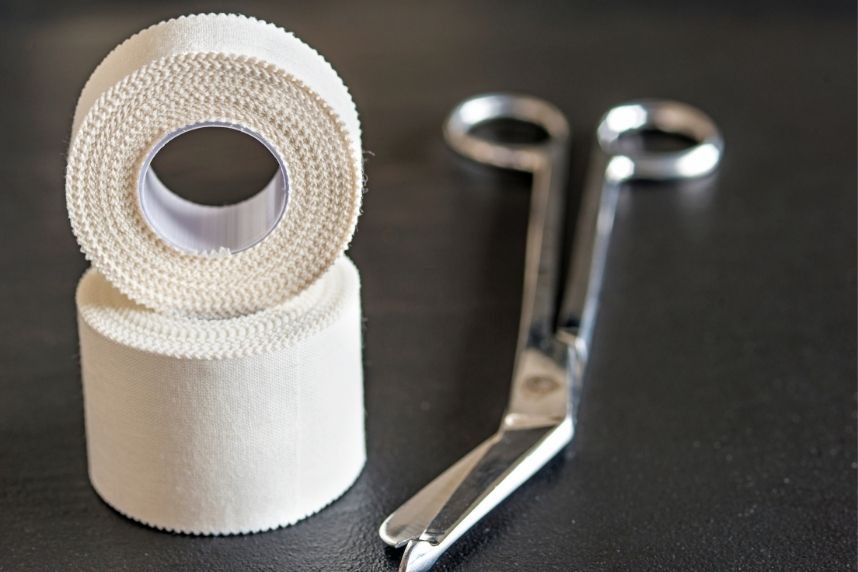In the realm of medical care, proper wound management is necessary for facilitating healing and preventing infections. Surgical tape and wound dressings are indispensable tools that healthcare professionals utilize to protect and promote the recovery of wounds. This blog aims to provide an in-depth understanding of surgical tape and wound dressings, their different types, uses, and how they contribute to effective wound management.
- Surgical Tape: Securing Wounds with Precision Surgical tape is a specialized adhesive tape employed to secure surgical incisions, dressings, and medical devices. It plays a vital role in maintaining the integrity of wounds, preventing contamination, and providing stability. Let’s explore some common types of surgical tape:
- Silk Tape: Silk tape is a versatile option that offers excellent adhesion and conforms well to the skin. It is breathable and hypoallergenic, making it suitable for patients with sensitive skin. Silk tape is often used to secure larger surgical dressings or tubes.
- Micropore Tape: Micropore tape is made from a soft, non-woven material that is gentle on the skin. It is breathable, allowing air to circulate and aid in the healing process. Micropore tape is commonly used for securing lightweight dressings, especially in areas with delicate skin, such as the face.
- Transparent Film Tape: Transparent film tape is a waterproof option that provides a clear, protective barrier over wounds. It allows for easy inspection without the need for tape removal. Transparent film tape is commonly used for securing IV catheters, central lines, and surgical incisions.
- Wound Dressings: Protecting and Promoting Healing Wound dressings are materials applied directly to wounds to facilitate healing, prevent infection, and maintain a moist environment. They come in various forms and are selected based on the type, location, and severity of the wound. Let’s explore some commonly used wound dressings:
- Alginate Dressings: Alginate dressings are made from seaweed extracts and are highly absorbent. They are particularly useful for wounds with moderate to heavy exudate, such as pressure ulcers and venous leg ulcers. Alginate dressings form a gel-like consistency when in contact with wound exudate, promoting autolytic debridement and facilitating wound healing.
- Foam Dressings: Foam dressings are designed to absorb and manage exudate while maintaining a moist environment. They offer cushioning and protection for wounds with moderate to heavy exudate, such as surgical wounds and chronic ulcers. Foam dressings are available in various thicknesses and shapes to accommodate different wound sizes and locations.
- Hydrogel Dressings: Hydrogel dressings provide moisture to dry or minimally exuding wounds, promoting a moist wound environment and facilitating autolytic debridement. They help soothe and cool the wound while supporting the healing process. Hydrogel dressings are commonly used for burns, necrotic wounds, and radiation-induced skin reactions.
- Selecting the Right Surgical Tape and Wound Dressings: Choosing the appropriate surgical tape and wound dressings depends on several factors, including the type of wound, level of exudate, wound location, and patient’s overall condition. Consider the following when making your selection:
- Wound Characteristics: Different wounds require specific types of dressings. Assess the wound size, depth, exudate levels, and any special considerations, such as infection risk or the need for debridement, to determine the most suitable dressing.
- Frequency of Dressing Changes: Consider the expected frequency of dressing changes when choosing dressings. For wounds with high exudate levels or that require frequent monitoring, opt for dressings that allow for easy inspection without frequent removal.
- Patient Comfort and Allergies: Take into account the patient’s comfort and any known allergies or sensitivities to specific materials. Choose dressings and surgical tape that are gentle on the skin, hypoallergenic, and minimize discomfort.
Surgical tape and wound dressings are essential components of effective wound management. By understanding the different types of surgical tape and wound dressings available, their uses, and how to choose the right ones, healthcare professionals can ensure proper wound protection, promote healing, and prevent complications. Remember to consult with a healthcare provider for personalized advice and guidance when dealing with specific wounds, as individual needs may vary. Together, surgical tape and wound dressings contribute to the successful recovery of patients and play a vital role in comprehensive wound care.



